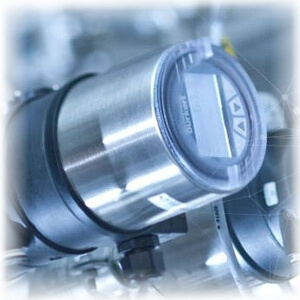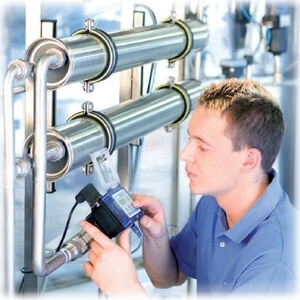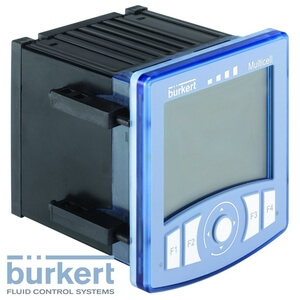Burkert liquid analysis systems
22.09.2019
Bürkert liquid analysis systems are sophisticated tools designed to monitor and analyze the properties of various liquids used in industrial processes. These systems are essential for ensuring that liquids meet specific quality and safety standards, which is crucial for maintaining the integrity and efficiency of industrial operations. The primary purpose of these systems is to provide precise, real-time data on liquid parameters such as pH, conductivity, dissolved oxygen, and other chemical and physical properties. This data is vital for controlling processes, ensuring compliance with regulations, and optimizing overall performance
Burkert fluid control systems is a complete line of sensors for analyze the physical and chemical liquids characteristics.
CONTENTS:
- Fluid sensors
- pH/ORP sensors
- Chlorine sensors
- Conductivity sensors
- Turbidity sensors
- Multichannel systems
Burkert fluid sensors
Fluid sensors are the critical components within liquid analysis systems that provide real-time information about the characteristics of a fluid. These devices act as the sensory organs of the system, collecting data that is then processed to make informed decisions about the fluid's condition, composition, or flow.
In numerous production processes, there is a need to control the different properties of the working fluid. For such purposes, special devices have been created to track the necessary parameters of the working substance.
Burkert manufactures the following types of sensors for water analysis:
- PH/ORP sensors
- Chlorine sensors
- Conductivity sensors
- Turbidity sensors
- Multichannel systems
These devices may greatly improve work quality in highly demanding industries such as food or pharmaceutical.
Main Advantages of Fluid Sensors
Fluid sensors offer a multitude of benefits that contribute to improved process efficiency, product quality, and safety. Some of the key advantages include:
- Real-time Monitoring: Continuous measurement of fluid parameters enables immediate detection of changes, allowing for timely adjustments to processes.
- Improved Process Control: Accurate sensor data can be used to optimize process parameters, reducing waste, energy consumption, and costs.
- Enhanced Product Quality: By monitoring critical fluid properties, sensors help ensure consistent product quality and compliance with standards.
- Increased Safety: Early detection of abnormal conditions through sensor data can prevent accidents and protect personnel and equipment.
- Reduced Maintenance: Regular monitoring of fluid parameters can help identify potential issues before they escalate, reducing downtime and maintenance costs.
- Data-Driven Decision Making: The wealth of information provided by sensors enables data-driven decision making, leading to better process optimization and problem-solving.
Burkert pH/ORP sensors
pH sensors measure the acidity or alkalinity of a liquid solution, expressed on a scale of 0 to 14. ORP sensors, on the other hand, measure the tendency of a solution to either gain or lose electrons. Both types of sensors are essential for monitoring and controlling various industrial processes.
Burkert's pH/ORP sensors typically consist of a sensing element (electrode) and a reference electrode housed in a protective body. The sensing element interacts with the liquid, generating a measurable electrical signal proportional to the water ph sensor or ORP value. This signal is then processed by a transmitter or controller to provide output for control or display purposes.
The pH parameter is a digital indication of the level of acidity and alkalinity of a substance and balance between them. ORP (Oxidation-Reduction Potential) is the redox potential of a substance. This parameter shows how much the current fluid can oxidize or restore oxygen level in another one.
The company produces the following types of sensors and controllers for pH / ORP analysis:
- Type 8201
- Type 8202
- Type MS01
- Type MS04
Burkert type 8201 is a sensor for measuring the level of acid-base balance using a ph electrode. It is intended for the food industry with special requirements for hygiene.
Burkert type 8202 is capable of measuring pH and ORP in liquids thanks to the PG 13.5 pH / ORP probes integrated in the system. In such device user can set parameters that need to be tracked during working or diagnostics processes.
Burkert type MS01 and MS04 are multi-channel sensor units, the first one is for determining the pH parameter, and the second is for measuring the ORP value.
Main Advantages of Burkert pH/ORP Sensors
Burkert pH/ORP sensors offer several advantages that make them a preferred choice for many industries:
- High Accuracy and Precision: Burkert sensors are designed to provide accurate and repeatable measurements, ensuring reliable process control.
- Durability and Reliability: Built to withstand harsh conditions, these sensors offer long service life and minimal maintenance requirements.
- Wide Measurement Range: Burkert provides sensors suitable for various pH and ORP ranges, accommodating diverse applications.
- Compatibility: The sensors are compatible with Burkert's automation systems, enabling seamless integration and control.
- Customizable Options: Burkert offers a range of sensor configurations and materials to meet specific process requirements.
Where are pH/ORP Sensors Used?
The applications for Burkert pH/ORP sensors are vast and diverse. Some of the key industries and processes that rely on these sensors include:
- Water and Wastewater Treatment: Monitoring pH and ORP to ensure water quality, optimize treatment processes, and comply with regulations.
- Food and Beverage Industry: Controlling fermentation processes, maintaining product quality, and ensuring food safety through pH and ORP measurement.
- Pharmaceutical Industry: Maintaining strict pH levels for drug production, quality control, and process validation.
- Chemical Processing: Monitoring pH and ORP for reaction control, product quality, and safety.
- Power Generation: Controlling water chemistry in boilers and cooling systems to prevent corrosion and scaling.
- Environmental Monitoring: Measuring pH and ORP in water bodies to assess water quality and pollution levels.
Burkert Chlorine sensors
Chlorine sensors are analytical devices that measure the concentration of chlorine in water or other liquid solutions. They operate on electrochemical principles, converting the chlorine concentration into a measurable electrical signal. This signal is then processed to provide real-time data on chlorine levels.
Burkert chlorine sensors are typically designed for inline installation, allowing continuous monitoring of chlorine concentration. They are available in various configurations to suit different applications and chlorine concentration ranges.
Such analyzers are created to track and analyze the concentration of chlorine in liquids. They are often used when working with drinking or seawater. Devices can determine the presence of the substance even at its very low concentration in a liquid.
The concentration of chlorine in the fluid can be determined using the following Burkert sensors:
- Type 8232
- Type MS02
Type 8232 is a special analyzer designed specifically for analyzing the concentration of free chlorine particles in a solution. A special Trace sensor is installed in the design, which have three electrodes.
Type MS02 is a special multifunctional unit that can detect not only chlorine level, but also dioxide concentration (CIO2) using MEMS technology.
Main Advantages of Burkert Chlorine Sensors
Burkert chlorine sensors offer several key advantages:
- High Accuracy and Precision: Delivering reliable and precise chlorine measurements for effective process control.
- Durability and Reliability: Constructed to withstand harsh conditions, ensuring long-term performance and minimal maintenance.
- Wide Measurement Range: Available in different models to accommodate varying chlorine concentration requirements.
- Quick Response Time: Providing real-time chlorine data for timely process adjustments.
- Compatibility: Seamless integration with Burkert's automation systems for efficient process control.
- Expert Support: Burkert offers technical expertise and support to assist customers in sensor selection and optimization.
Where are Chlorine Sensors Used?
Chlorine sensors find applications in numerous industries where water quality is paramount:
- Water Treatment Plants: Monitoring chlorine levels in drinking water, wastewater, and swimming pools to ensure disinfection efficiency and compliance with regulations.
- Food and Beverage Industry: Controlling chlorine levels in water used for cleaning and sanitizing equipment, preventing contamination.
- Pharmaceutical Industry: Maintaining strict chlorine levels in water used in production processes to ensure product purity.
- Power Plants: Monitoring chlorine levels in cooling water to prevent fouling and corrosion.
- Aquaculture: Controlling chlorine levels in water used for fish farming to maintain optimal conditions.
Burkert conductivity sensors
A conductivity sensor consists of two electrodes immersed in the liquid. An alternating current is applied between the electrodes, and the sensor measures the resulting electrical conductivity. This conductivity value is directly proportional to the concentration of ions in the solution.
Burkert conductivity sensors are available in various designs to suit different applications, including inline sensors for continuous monitoring and immersion sensors for batch processes. They often incorporate temperature compensation to ensure accurate measurements across varying liquid temperatures.
Devices of this type are designed to analyze the conductivity of a substance inductively or using electrodes.
The series includes the following sensors:
- Type 8220
- Type 8221
- Type 8222
- Type 8228
- Type MS03
Type 8220 is a standard sensor that measures the medium conductivity.
Type 8221 is a conductivity meter that can work in conditions with high hygienic requirements.
Type 8222 is also a versatile conductivity meter that can operate in different temperature ranges due to several built-in sensors.
Type 8228 is an inductive conductivity meter. It's suitable for working with density liquids. The device may directly connect to the software logic controller.
Type MS03 is a multifunctional unit. It has several functions and one of them is determine the electrical conductivity of a substance.
Main Advantages of Burkert Conductivity Sensors
Burkert conductivity sensors offer several key benefits:
- High Accuracy and Precision: Delivering reliable and precise conductivity measurements for effective process control.
- Durability and Reliability: Designed to withstand harsh conditions, ensuring long-term performance and minimal maintenance.
- Wide Measurement Range: Available in different models to accommodate varying conductivity levels.
- Quick Response Time: Providing real-time conductivity data for timely process adjustments.
- Compatibility: Seamless integration with Burkert's automation systems for efficient process control.
Burkert turbidity sensors
Turbidity sensors measure the amount of suspended solids or particles in a liquid. They operate on the principle of nephelometry, where light is scattered by particles in the water. The intensity of the scattered light is directly proportional to the turbidity of the liquid.
Burkert turbidity sensors typically employ infrared light for measurement, ensuring accurate results even in colored or turbid liquids. These sensors are available in various designs to suit different applications, including inline sensors for continuous monitoring and immersion sensors for batch processes.
To measure turbidity in liquids, Burkert released the Type MS05 unit. The device is compatible with most modern computer buses. This may simplify transfer data.
To take measurements, such unit only needs a small amount of sample liquid. The sensor unit is fully certified according to DIN EN ISO 7027.
Main Advantages of Burkert Turbidity Sensors
Burkert turbidity sensors offer several key benefits:
- High Accuracy and Precision: Delivering reliable and precise turbidity measurements for effective process control.
- Durability and Reliability: Designed to withstand harsh conditions, ensuring long-term performance and minimal maintenance.
- Wide Measurement Range: Available in different models to accommodate varying turbidity levels.
- Quick Response Time: Providing real-time turbidity data for timely process adjustments.
- Compatibility: Seamless integration with Burkert's automation systems for efficient process control.
Burkert multichannel systems
A multichannel system integrates various sensors, such as pH, conductivity, turbidity, chlorine, and others, into a single unit. These sensors work in concert to provide real-time data on multiple liquid parameters simultaneously. The system often includes data acquisition, processing, and communication capabilities, allowing for advanced process control and monitoring.
Such control devices family includes:
- Type 8619
- Type 8905
- Type ME2X
Type 8619 multiCELL is a converter and controller in a single package. It may work with all liquid analyzers produced by the concern. Its simple usage is provided by a built-in display and compatibility with Ethernet protocols.
Type 8905 is a device designed to perform remote water analysis. This function is provided due to the ability of working with the most popular bus-systems.
Type ME2X is designed to operate as a central system control unit. Devices of this series can be installed in a system with Ethernet using the own Burkert or CanOpen system bus. The main models feature is User-f (x) function, which allows the user to make corrections via programming.
Conclusion
Burkert liquid analysis systems stand as a testament to the company's commitment to providing cutting-edge solutions for the precise monitoring and control of liquid properties. By offering a diverse range of sensors, from pH and conductivity to turbidity and chlorine, Burkert empowers industries to optimize processes, enhance product quality, and ensure safety.
The integration of multiple sensors into multichannel systems further elevates the capabilities of liquid analysis, providing a comprehensive overview of liquid characteristics. This holistic approach enables data-driven decision-making, leading to increased efficiency and reduced operational costs.
In an era where precision and efficiency are paramount, Burkert liquid analysis systems offer a compelling solution. By harnessing the power of accurate measurement and control, industries can achieve new levels of performance and sustainability.
Discover a vast range of Burkert liquid analysis systems on Eltra Trade. From pH sensors to multichannel solutions, we have it all. Worldwide delivery and expert guidance from our managers. Let us help you find the perfect system for your needs. Best prices guaranteed!